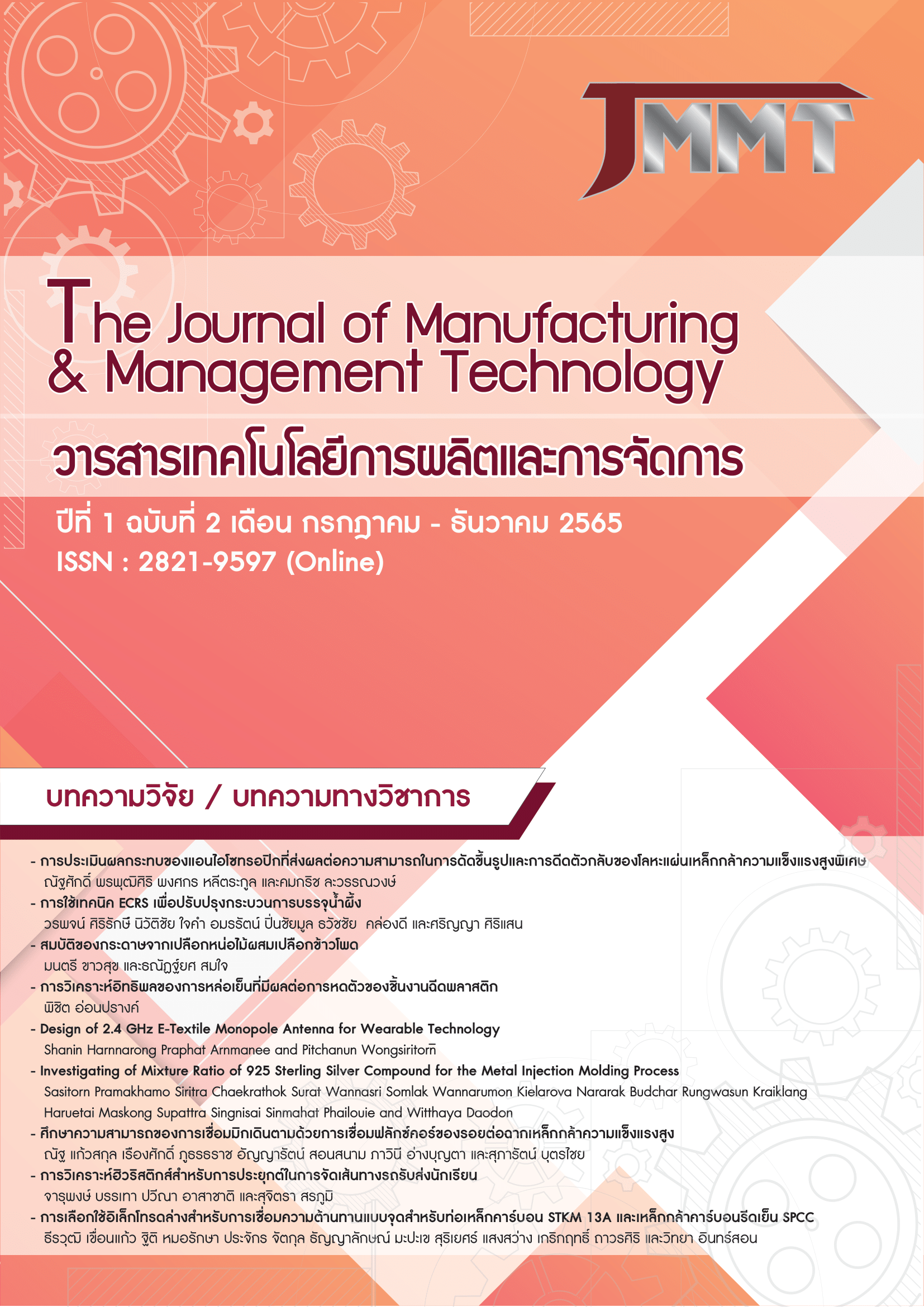Anisotropic Evaluating Effect to Bendability and Springback of Advanced High Strength Steel Sheet
Keywords:
Sheet metal forming, Bendability, Springback, Bending surface, High strength steelAbstract
The formability of sheet metal part with smaller radius and prediction of the springback angle size after forming. It is an important condition in tool design, controlling the bending process and assessing the size and shape accuracy of high-strength steel sheet finished part. The conditions regarding the rolling direction or anisotropic value (R) and strain hardening exponent (n) of sheet metal also affected the bendability of sheet metal which interested. The purpose of this research is determining a fundamental approach to data integration for evaluating the springback behavior and bendability of high-strength steel sheet by experimental method to study the effects of anisotropic properties and strain hardening exponents of materials for developed a guideline for comparative prediction with the effect of bending forces, springback angle size and the bendability due to changes in surface roughness and damage on the bending surface of sheet metal. The Air-bending tests method were performed in accordance with ISO 7438 : 2010 at every 15° bending angle from 15° to 75° with high strength sheet metal material SPFC 980 grade which is widely used as a car component. The experiment results showed that the bending force varies with the ultimate tensile strength of the material. The size of springback angle depends on the ultimate tensile strength and total elongation. The bending test specimens on the transverse rolling direction with higher ultimate tensile strength, that has a higher springback angle. The bending test on the rolling direction, which has a lower ultimate tensile strength and higher elongation, has a smaller springback angle. However, the springback angle tends to decrease as the bending angle increases. The characteristics of bending surface will depend on the nature and direction of the bending force. The bending surface roughness is increased and the crack size becomes significantly larger and wider as the bending angle is increased.
Downloads
Published
How to Cite
Issue
Section
License
Copyright Notice articles, information, images, etc. was published in this Journal of Manufacturing and Management Technology is a copyright of the Journal of Manufacturing and Management Technology. If any person or deparment wants to bring all or part of it for publish or take any action. Authorization is required in written form from the Journal of Manufacturing and Management Technology only.



